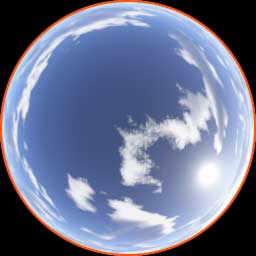

The horizon corresponds to the circumference.
The horizon is lift up and appears in the image.
Compression and Tilt
-The dome masters on this page were stitched and transformed by QuickStitcher-
Compression and tilt are the most common transformations of a dome master
that are used to increase sense of immersion of the audience.
 |
 |
| NORMAL DOME MASTER The horizon corresponds to the circumference. |
COMPRESSED DOME MASTER The horizon is lift up and appears in the image. |
Compression means the field of view (FOV) of the lens is widened to more than 180 degrees.
Since the FOV of a normal dome master is 180 degrees,
the horizon can not be shown unless the image is compressed.
In the pentadivision alignment (no bottom), dome masters can be compressed up to +45 degrees
(FOV=270 degrees). But in the quadridivision alignment (no bottom or back), they can not be compressed
because only 180-degree area has been rendered.
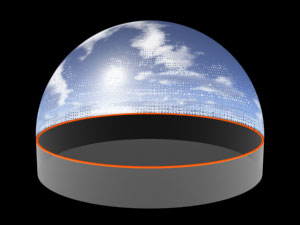
| 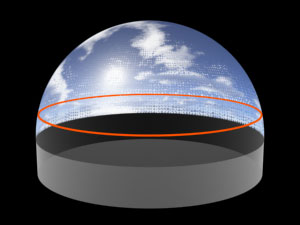
|
PROJECTED IMAGES ON THE DOME (HORIZONTAL DOME)
The audience gets the impression that they are in the middle of the ocean from the compressed dome master (right).
The audience gets the impression that they are in the middle of the ocean from the compressed dome master (right).

| 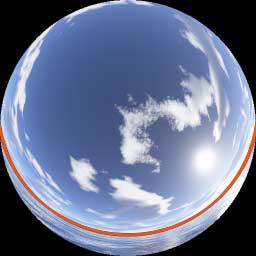
|
| NORMAL DOME MASTER The horizon corresponds to the circumference. |
TILTED DOME MASTER The horizon is tilted and appers in the image. |
Some theaters have a dome screen tilted forward, which is called a "tilted dome".
In a tilted dome, dome masters need to be tilted backward to keep
the horizon in the images horizontal.
In the pentadivision alignment (no bottom), dome masters can be tilted up to +/-45 degrees.
But in the quadridivision alignment (no bottom or back), they could not be tilted
because only 180-degree area has been rendered.
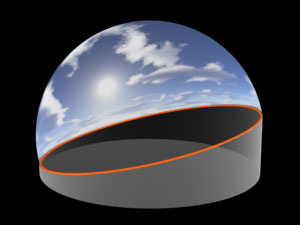
| 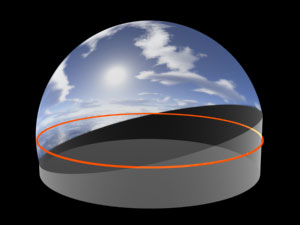
|
PROJECTED IMAGES ON THE DOME (TILTED DOME)
The tilted dome master (right) gives the audience a more natural impression in a tilted dome.
PROBLEMS WITH TILTED DOMES: Some tilted dome theaters, especially where a large format film projector is installed,
have an incomplete hemispheric dome, or less than 180-degree dome. In most cases, the projection angle of this kind of
dome is about 160 degrees. It is to be noted that these domes create differences in the rise/set times and placement of
celestial bodies when you need to simulate celestial motions precisely.
Compression & Tilt
The following compressed and tilted image was first compressed and then tilted.
We will discuss the procedure of tilt and compression in detail later.

| 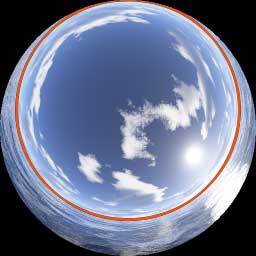
|
| COMPRESSED DOME MASTER |
COMPRESSED & TILTED DOME MASTER The horizon is tilted and compressed and lift up significantly. |
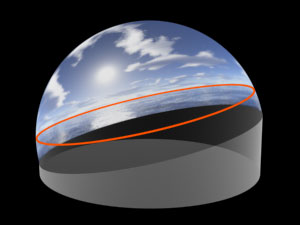
| 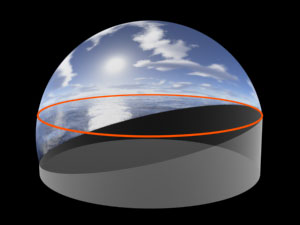
|
PROJECTED IMAGES ON THE DOME (TILTED DOME)
In the case of an image with a skyline, a compressed and tilted dome master will give
the most natural and immersive sense to the audience.
Copyright 2004-2011 © PineappleWare All rights reserved.